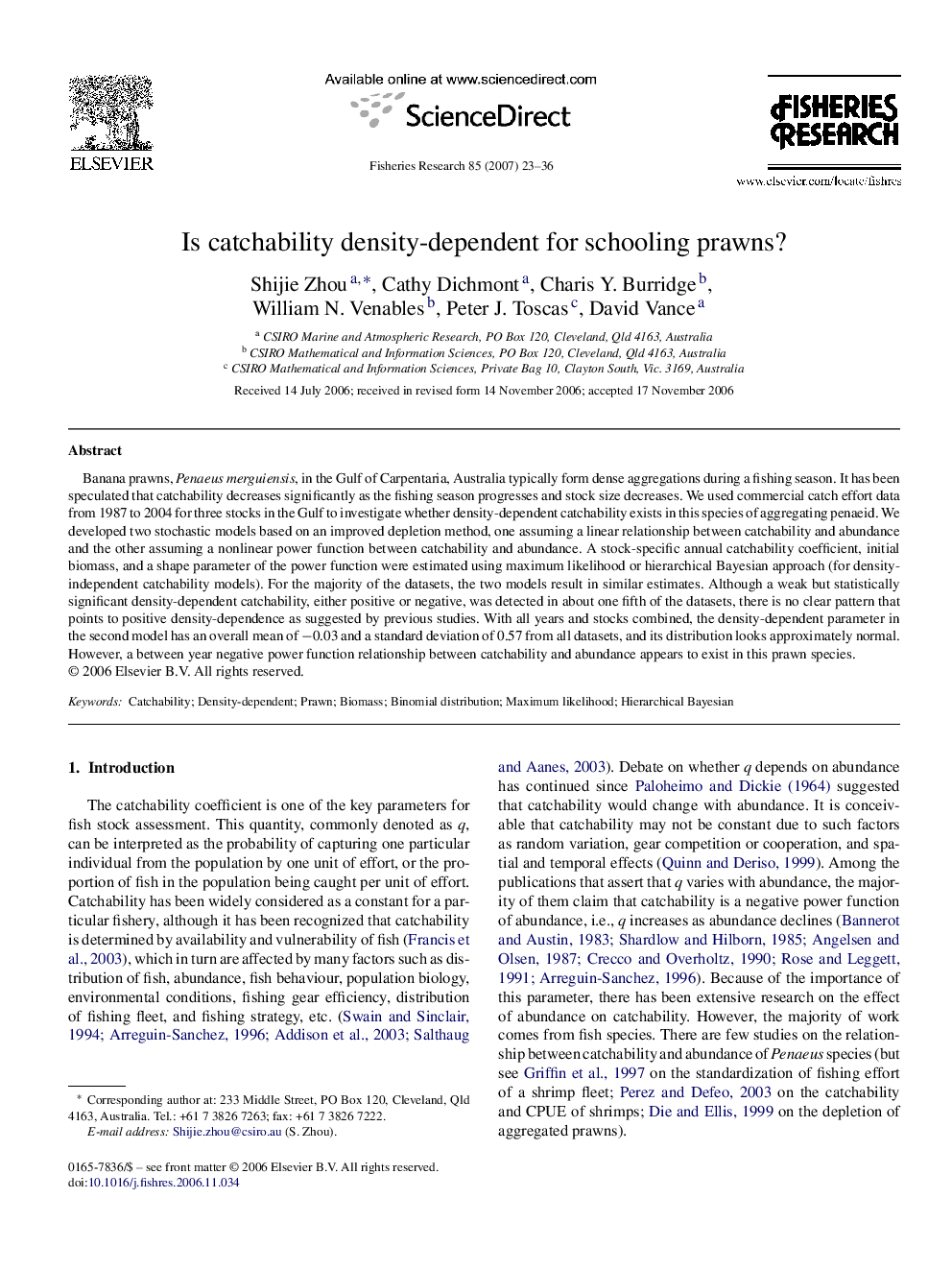| Article ID | Journal | Published Year | Pages | File Type |
|---|---|---|---|---|
| 4544750 | Fisheries Research | 2007 | 14 Pages |
Banana prawns, Penaeus merguiensis, in the Gulf of Carpentaria, Australia typically form dense aggregations during a fishing season. It has been speculated that catchability decreases significantly as the fishing season progresses and stock size decreases. We used commercial catch effort data from 1987 to 2004 for three stocks in the Gulf to investigate whether density-dependent catchability exists in this species of aggregating penaeid. We developed two stochastic models based on an improved depletion method, one assuming a linear relationship between catchability and abundance and the other assuming a nonlinear power function between catchability and abundance. A stock-specific annual catchability coefficient, initial biomass, and a shape parameter of the power function were estimated using maximum likelihood or hierarchical Bayesian approach (for density-independent catchability models). For the majority of the datasets, the two models result in similar estimates. Although a weak but statistically significant density-dependent catchability, either positive or negative, was detected in about one fifth of the datasets, there is no clear pattern that points to positive density-dependence as suggested by previous studies. With all years and stocks combined, the density-dependent parameter in the second model has an overall mean of −0.03 and a standard deviation of 0.57 from all datasets, and its distribution looks approximately normal. However, a between year negative power function relationship between catchability and abundance appears to exist in this prawn species.
